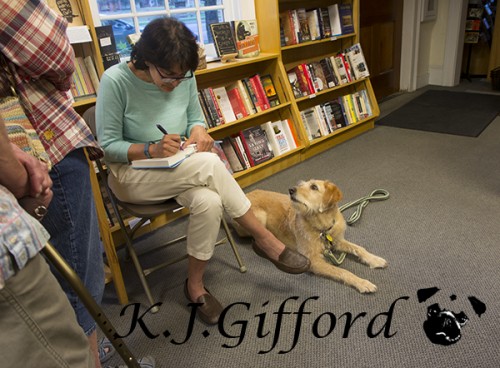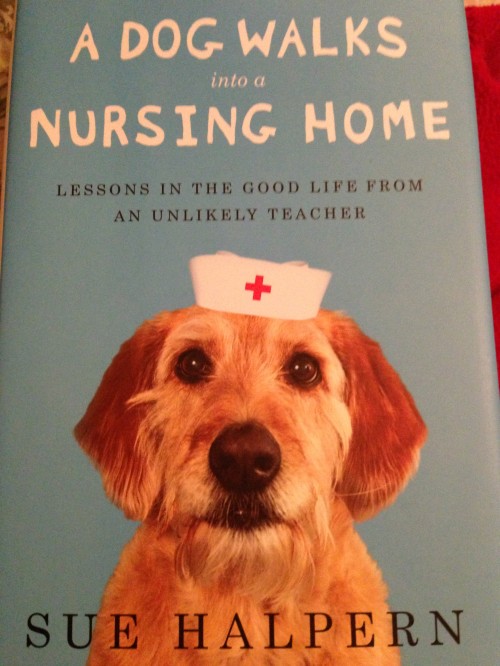 The Norwich Bookstore was filled to capacity tonight when my best friend Sheila and I walked through the door.
The Norwich Bookstore was filled to capacity tonight when my best friend Sheila and I walked through the door.
“Did you make a reservation?” the young woman at the door inquired.
“Did we have to?” I responded.
“Yes,” she said. “But you can sit on the stairway.
We climbed the steps took a seat and looked down to watch author Sue Halpern and her therapy dog, Pransky, wind through the crowds to the front of the room. We were there to hear a reading of her new book, A Dog Walks into a Nursing Home, about her therapy work with Pransky.
I, of course, was drawn to the reading by my interest in everything dog, but also by the fact that Sue Halpern is a teacher at my alma mater, Middlebury College, and is married to climate change guru Bill McKibben. From my high perch on the steps I had a wonderful view of Pransky, a golden Labradoodle with whom I and the rest of the crowd fell quickly in love, but once the introductions started Halpern seized my attention in her own right.
I hadn’t yet read the book, but I can’t wait to do so, as this is more than another dog story, though Pransky and her work are prominently featured. As Halpern talked I learned her book is organized around the seven virtues.
“What do you do at the nursing home?” one of the members of the audience asked and Halpern’s answer was very revealing.
“I soon learned it was not about doing but being,” she said.
She explained how while she was looking for something to do together with her intelligent and active dog, her own interest in memory led her to want to work at a nursing home where many people were dealing with dementia. She had a selfish reason as well. People with dementia don’t always look ill and the thought of working with people at the end of their lives or suffering from serious illness did not appeal to her, causing anxiety at the thought of confronting their and perhaps her own mortality. She soon found herself, however, working with that population and soon realized that while she may have been nervous her dog was anything but. She was just happy to be with the people who were happy to see her. Halpern sensed there was a story in all this and suspected that a patient in the nursing home would eventually reveal themselves and share a gem of wisdom from which a book would be spun, a la Tuesdays with Morrie perhaps. Halpern noted that this didn’t happen. The story she realized was about the collective experience of all these patients and their effect on her dog.
“I started to ask the big questions such as how do you live your life?” she said. “I began to ask myself what am I learning?”
These questions soon led her to ask more – was working at the nursing home an act of charity or an act of self-interest?
So often dog books are viewed as something frivolous, something to be dismissed as part of the new cultural obsession with everything canine, but seldom have I encountered a dog book that is simply just about being a cute dog. Many like Halpern’s seem to address larger issues. Interestingly, dogs seem to have a way of making us more human. I can’t wait to read Halpern’s book and discover more about her journey because each dog book seems to take me on my own.


